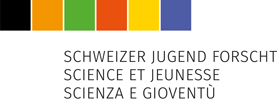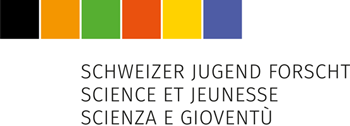Biologie | Umwelt
Kolja Lehmann, 2002 | Zürich, ZH
The microorganism Pyrocystis fusiformis, a marine dinoflagellate, shows the phenomenon of bioluminescence when disturbed. The bioluminescence is caused by the light-emitting molecule Luciferin and is fuelled by photosynthesis. This study investigated the bioluminescence of P. fusiformis cultures and their potential of acting as a bio-based alternative to common light sources. A self-designed and self-built measuring setup consisting of photodiodes, a magnetic stirrer, and an Arduino Uno minicomputer was used to measure light intensity, performance duration and recovery ability in replicate cultures on 14 consecutive days in three different assays. On average, cultures reached a maximum light intensity of 0.148 mW, which was sufficient to make structural changes in the proximity visible. Cultures retained at least 25 % of the maximum intensity for 22.7 seconds. After a recovery period of 40 minutes in darkness followed by a second stimulation, this duration was reduced to 30-40 %. While the study shows that bioluminescence can easily and reliably be triggered in cultures of P. fusiformis, the values confirm that they cannot replace conventional light sources yet.
Introduction
Do cultures of the bioluminescent Pyrocystis fusiformis alga present a viable alternative to conventional light sources in terms of light intensity, performance duration and recovery ability?
Methods
Three different assays were performed daily with six replicate cultures of P. fusiformis for 14 consecutive days. The measuring setup consisted of photodiode sensors, a magnetic stirrer, and an Arduino Uno minicomputer. When exposed to light, photodiodes produce a current that is proportional to the light intensity, which allows the quantification of bioluminescence. In a first step, this setup was used to constantly stimulate algae cultures with the magnetic stirrer and measure the maximum light intensity and performance duration. After a recovery phase of 40 min in complete darkness, a second assay was performed to measure recovery ability. In a third assay, the short-term recovery ability was measured by stimulating cultures with the magnetic stirrer in 30 s intervals with 1 min recovery phases in-between.
Results
On average, algae cultures reached a maximum light intensity of 0.148 mW, at which structural changes in the proximity became visible (a normal LED reaches 30 times this value, i.e., 3 mW). Bioluminescent activity lasted for 22.7 s, which was reduced to 30-40 % of the initial activity after 40 min of recovery in darkness. Cultures did not recover when repetitively stimulated in short 30 s intervals with 1 min recovery phases in-between.
Discussion
Using the self-designed and self-built measurement setup, bioluminescent activity of P. fusiformis was successfully quantified and described. However, the observed values suggest that cultures of P. fusiformis are not an alternative to conventional light sources at this moment. After complete exhaustion of bioluminescence, cultures were able to partially recover when kept for 40 minutes in darkness. Because cultures were not able to photosynthesize during this period, this indicates that P. fusiformis creates new Luciferin from an internal energy storage. In future studies, a quantification of the number of cells in the culture may allow the description of bioluminescence on a single-cell level. By altering various environmental parameters, such as temperature, pH or CO2, it may be possible to further increase bioluminescence in the cultures.
Conclusions
In this study, bioluminescence of P. fusiformis was successfully measured. The obtained values do not meet the requirements of a usable light source and the research question must therefore be denied. Nevertheless, P. fusiformis shows a great potential and further research, possibly with the help of genetic engineering, may allow these algae to act as a lighting system in the future.
Würdigung durch den Experten
Dr. Dominik Refardt
Die Arbeit von Kolja Lehmann ist von echter Forscherneugier motiviert. Die Beobachtung des Meeresleuchtens, ausgelöst durch das Kleinstlebewesen Pyrocystis, hat in ihm die Frage geweckt, ob sich dies auch als Beleuchtung einsetzen liesse. Um dies zu beantworten, hat Kolja Lehmann nicht nur selber Pyrocystis kultiviert, sondern auch ein hochsensibles Analysegerät gebaut, mit Hilfe dessen er die Biolumineszenz messen und beschreiben konnte. Damit gelang ihm eine disziplinenübergreifende Forschungsarbeit, die Biologie und Ingenieurswissenschaften vereint, um belastbare Antworten zu erhalten.
Prädikat:
sehr gut
Sonderpreis Swiss Junior Water Prize
Rämibühl-Realgymnasium, Zürich
Lehrer: Marco Lichtsteiner



